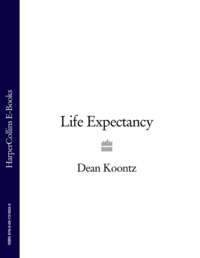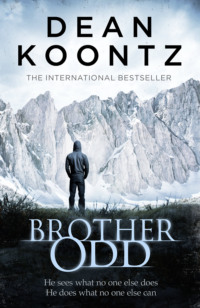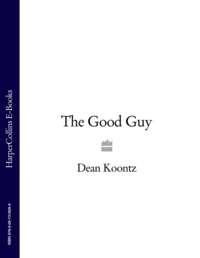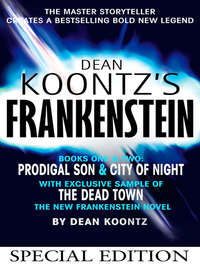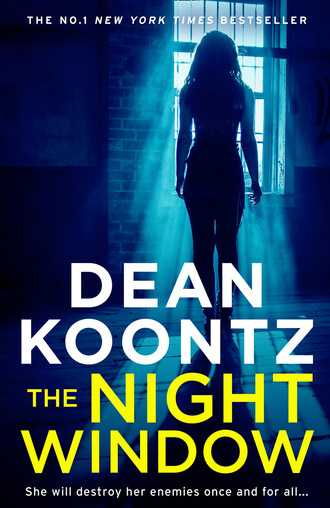
Полная версия
The Night Window

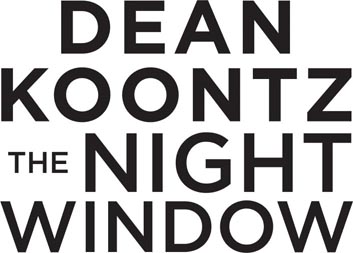

Copyright
This is entirely a work of fiction. The names, characters and incidents portrayed in it are the work of the author’s imagination. Any resemblance to actual persons, living or dead, events or localities is entirely coincidental.
HarperCollinsPublishers
1 London Bridge Street
London SE1 9GF
www.harpercollins.co.uk
Published by HarperCollinsPublishers 2019
First published in the USA in 2019 by Bantam Books,
an imprint of Random House,
a division of Penguin Random House LLC, New York.
Copyright © Dean Koontz 2019
Cover design layout © HarperCollinsPublishers Ltd 2019
Cover photographs © Stephen Carroll / Trevillion Images
Dean Koontz asserts the moral right to be identified as the author of this work
A catalogue record for this book is available from the British Library
This novel is entirely a work of fiction.
The names, characters and incidents portrayed in it are the work of the author’s imagination. Any resemblance to actual persons, living or dead, events or localities is entirely coincidental.
All rights reserved under International and Pan-American Copyright Conventions. By payment of the required fees, you have been granted the non-exclusive, non-transferable right to access and read the text of this e-book on-screen. No part of this text may be reproduced, transmitted, down-loaded, decompiled, reverse engineered, or stored in or introduced into any information storage and retrieval system, in any form or by any means, whether electronic or mechanical, now known or hereinafter invented, without the express written permission of HarperCollins e-books
Source ISBN: 9780008291396
Ebook Edition © December 2018 ISBN: 9780008291433
Version: 2019-05-22
Dedication
To Gerda,
who is my Jane

In memory of Ruth Ebner, also known as Pepper, who was not just a faithful reader but also an advocate of my work and much loved by her many friends
Epigraph
Creating a neural [brain] lace is the thing that really matters for humanity to achieve symbiosis with machines.
—ELON MUSK
Ain’t it strange the way we’re ignorant
How we seek out bad advice
How we jigger it and figure it
Mistaking value for the price
—PAUL SIMON, “So Beautiful or So What?”
Contents
Cover
Title Page
Copyright
Dedication
Epigraph
PART ONE: Sucker Punch
Chapter 1
Chapter 2
Chapter 3
Chapter 4
Chapter 5
Chapter 6
Chapter 7
Chapter 8
Chapter 9
Chapter 10
Chapter 11
Chapter 12
Chapter 13
Chapter 14
Chapter 15
PART TWO: Bad Weather
Chapter 1
Chapter 2
Chapter 3
Chapter 4
Chapter 5
Chapter 6
Chapter 7
Chapter 8
Chapter 9
Chapter 10
Chapter 11
Chapter 12
Chapter 13
Chapter 14
Chapter 15
Chapter 16
Chapter 17
Chapter 18
Chapter 19
Chapter 20
Chapter 21
Chapter 22
Chapter 23
Chapter 24
Chapter 25
Chapter 26
Chapter 27
Chapter 28
PART THREE: Storm Troopers
Chapter 1
Chapter 2
Chapter 3
Chapter 4
Chapter 5
Chapter 6
Chapter 7
Chapter 8
Chapter 9
Chapter 10
Chapter 11
Chapter 12
Chapter 13
Chapter 14
Chapter 15
Chapter 16
Chapter 17
Chapter 18
Chapter 19
Chapter 20
Chapter 21
Chapter 22
Chapter 23
Chapter 24
Chapter 25
Chapter 26
Chapter 27
Chapter 28
Chapter 29
Chapter 30
Chapter 31
Chapter 32
Chapter 33
Chapter 34
Chapter 35
Chapter 36
Chapter 37
Chapter 38
Chapter 39
Chapter 40
Chapter 41
Chapter 42
Chapter 43
Chapter 44
Chapter 45
Chapter 46
Chapter 47
Chapter 48
Chapter 49
Chapter 50
Chapter 51
Chapter 52
Chapter 53
PART FOUR: No Escape
Chapter 1
Chapter 2
Chapter 3
Chapter 4
Chapter 5
Chapter 6
Chapter 7
Chapter 8
Chapter 9
Chapter 10
Chapter 11
Chapter 12
Chapter 13
Chapter 14
Chapter 15
Chapter 16
Chapter 17
Chapter 18
Chapter 19
Chapter 20
Chapter 21
Chapter 22
Chapter 23
Chapter 24
Chapter 25
PART FIVE: Jane in Chains
Chapter 1
Chapter 2
Chapter 3
Chapter 4
Chapter 5
Chapter 6
Chapter 7
Chapter 8
Chapter 9
Chapter 10
Chapter 11
Chapter 12
Chapter 13
Chapter 14
Chapter 15
Chapter 16
Chapter 17
Chapter 18
Chapter 19
Chapter 20
Chapter 21
Chapter 22
Chapter 23
Chapter 24
Chapter 25
Chapter 26
Chapter 27
Chapter 28
Chapter 29
PART SIX: Free Will
Chapter 1
Chapter 2
Chapter 3
Chapter 4
Chapter 5
Chapter 6
Chapter 7
Chapter 8
Chapter 9
Chapter 10
Chapter 11
Chapter 12
Chapter 13
Chapter 14
Chapter 15
Chapter 16
Chapter 17
Chapter 18
Chapter 19
Chapter 20
Chapter 21
Chapter 22
Keep Reading …
About the Author
By Dean Koontz
About the Publisher
1
The triple-pane floor-to-ceiling windows of Hollister’s study frame the rising plain to the west, the foothills, and the distant Rocky Mountains that were long ago born from the earth in cataclysm, now dark and majestic against a sullen sky. It is a view to match the man who stands at this wall of glass. The word cataclysm is a synonym for disaster or upheaval but also for revolution, and he is the leader of the greatest revolution in history. The greatest and the last. The end of history is near, after which his vision of a pacified world will endure forever.
Meanwhile, there are mundane tasks to perform, obligations to address. For one thing, there is someone who needs to be killed.
In a few hours, when a late-season storm descends on these high plains east of Denver, the hunt will begin, and one of two men will die at the hands of the other, a fact Wainwright Warwick Hollister finds neither exhilarating nor frightening. Of profound importance to Hollister is that he avoid the character weaknesses of his father, Orenthal Hollister, and at all times comport himself in a more formidable and responsible manner than had his old man. Among other things, this means that when someone needs to be eliminated, the killing can’t always be done by a hireling. If a man is too finicky to get blood on his hands once in a while, or if he lacks the courage to put himself at physical risk, then he can’t claim to be a leader in this world of wolves, nor even a member of the pack, but is instead only a sheep in wolf’s clothing.
The hunt will occur here, on Crystal Creek Ranch, Hollister’s twelve-thousand-acre spread, unto itself a world of pine forests and rolling meadows. The chase will not be fair, because Hollister does not believe in fairness, which exists nowhere either in nature or in the human sphere. Fairness is an illusion of the weak and ignorant; it is the insincere promise made by those who manipulate the masses for gain.
The quarry, however, will have a chance to survive. A very slim one, but a chance. Although Hollister’s father, Orenthal, had been a powerful man physically as well as financially, his heart had been that of a coward. If ever he had decided that he couldn’t farm out all the violence required for the furtherance of his business, if he’d seen the moral need for every prince to be also a warrior, he wouldn’t have given the quarry any chance whatsoever. The hunt would have been an empty ritual with only one possible end: the triumph of Orenthal and the death of his prey.
Now the security system, which always knows Hollister’s location in this forty-six-thousand-square-foot residence, speaks in a soft, feminine voice. “Thomas Buckle has arrived in the library.”
Thomas Buckle is a houseguest from L.A. The sole passenger on Hollister’s Gulfstream V, he landed two hours earlier, at eleven o’clock this morning, on Crystal Creek’s six-thousand-foot airstrip, was driven 1.6 miles from the hangar to the main house in a Rolls-Royce Phantom, and settled in a guest suite on the main floor.
He will most likely be dead by dawn.
The house is a sleek ultramodern masterpiece of native stone, glass, and stainless steel, with floors of limestone on which ornately figured antique Persian carpets float like lush warm islands on a cold pale sea.
The library contains twenty-five thousand volumes that Hollister inherited from his father. The old man was a lifelong reader of novels. But his son has no use for fiction. Wainwright Warwick Hollister is a realist from his epidermis to his marrow. Orenthal also read many works of philosophy, forever searching for the meaning of life. His son has no use for philosophy because he already knows the two words that give life its meaning: money and power. Only money and power can defend against the chaos of this world and ensure a life of pleasure. Those people whom he can’t buy, Hollister can destroy. People are tools, unless they decline to be used, whereupon they become merely obstructions that must be broken and quickly swept aside—or eliminated entirely.
With no need for his father’s books, he had considered donating the collection to a charity or university but instead moved them to this place as a reminder of the old man’s fatal weakness.
Now, at one o’clock, as Hollister enters the library, Thomas Buckle turns from the shelves and says, “What a magnificent collection. First editions of everything from Ray Bradbury to Tom Wolfe. Hammett and Hemingway. Stark and Steinbeck. Such eclectic taste.”
Buckle is twenty-six, handsome enough to be an actor, though he dreams of a career as a famous film director. He has already made two low-budget movies acclaimed by some critics, but box-office success has eluded him. He is at a crucial juncture, an ambitious young man of considerable talent whose philosophy and vision are at odds with the common wisdom that currently prevails in Hollywood, which he has begun to discover will limit his opportunities.
He has come here in response to a personal phone call from Wainwright Hollister, who expressed admiration for the young man’s work and a desire to discuss a business proposal involving film production. This is a lie. However, as people are tools, so lies are nothing more than the various grips that one must apply to make them perform as wanted.
Upon the director’s arrival, Hollister had briefly greeted him; now there is no need for the formalities of introduction. A smile is all he requires when he says, “Perhaps you would like to select one of these novels that’s never been filmed and make it our first project together.”
Although he is the least sentimental of men and although he has no capacity for the more tender emotions, Wainwright Hollister is graced with a broad, almost supernaturally pleasant face that can produce a smile with as many charming permutations as that of any courtesan in history, and he can use it to bewitch both women and men. They see compassion when in fact he regards them with icy contempt, see mercy when they should see cruelty, see humility when he views them with condescension. He is universally thought to be a most amiable man with a singular capacity for friendship, though in his heart he views everyone as a stranger too unknowable ever to be a friend. He uses his supple, glorious smile as if it were a farmer’s seeding machine, planting kernels of deceit deep in everyone he meets.
Having been flown to Colorado in high style and having been treated like a prodigal son, Thomas Buckle takes seriously the offer to select any book in this library to translate to film. He looks around wonderingly at the shelves of material. “Oh, well, I sure wouldn’t want to make that choice lightly, sir. I’d want to have a better idea of what’s here.”
“You’ll have plenty of time to pore through the collection later,” Hollister lies. “Let’s have lunch. And please dispense with the ‘sir.’ I haven’t been knighted. Just call me Wayne. ‘Wainwright’ is a mouthful, and ‘Warwick’ sounds like the villain in some superhero movie.”
Thomas Buckle is an honest young man. His father is a tailor, a salaried employee of a dry-cleaning shop, and his mother works as a department store seamstress. Although his parents struggled to contribute to his film school tuition, Thomas paid for most of it, having worked part-time jobs since his freshman year in high school. On his two movies, he cut his fees for writing and directing, in order to increase the budget for actors and scene setups. He’s too naïve to realize that his producing partner on those projects cleverly siphoned off some of the studio’s money, which Hollister discovered from the exhaustive investigation he commissioned of Buckle’s affairs. As the child of honest people, as an earnest artist and a striver in the all-American tradition, the young man has an abundance of hope and determination, but a serious deficit of street smarts; much to learn and no time left to learn it.
As they make their way from the library to the dining room, Tom Buckle can’t restrain himself from commenting on the grandeur of the house and the high pedigree of the paintings on the walls—Jackson Pollock, Jasper Johns, Robert Rauschenberg, Andy Warhol, Damien Hirst … He is a poor boy enchanted by Hollister’s great wealth, much as the sorcerer’s apprentice might be captivated by the mystery of his master during the first day on the job.
There is no envy in his manner, no evidence of greed. Rather, as a filmmaker, he is besotted with the visuals. The drama of the house appeals to him as a story setting, and he is spinning some private narrative in his mind. Perhaps he imagines a biographical film of his own life, with this scene as the turning point between failure and phenomenal success.
Hollister enjoys answering questions about the architecture and the art, telling anecdotes of construction and acquisition. Only when he senses Tom Buckle has been drawn into his host’s orbit, and then with great calculation, does Hollister put one arm around the young director’s shoulders in the manner of a doting uncle.
This familiarity is received without the slightest stiffening or surprise. Honest men from honest families are at a disadvantage in this world of lies. The poor fool is as good as dead already.
2
The wisdom of millennia and numerous cultures was stacked on a grid maze of shelves flanking dimly lighted aisles in which no one searched for knowledge, all as quiet as an undiscovered pharaoh’s tomb in a pyramid drifted over by a thousand feet of sand.
That first Friday in April, Jane Hawk was ensconced in a library in the San Fernando Valley, north of Los Angeles, using one of the public-access workstations that were nestled in a computer alcove, which currently offered the only action in the building. Because every computer featured a GPS locater, as did smartphones and electronic tablets and laptops, she carried none of those things. Although the authorities searching for her knew she used library computers, on this occasion she avoided websites they might expect to be of interest to her. Consequently, she was relatively secure in the conviction that none of her probes would trigger a track-to-source security program and pinpoint her location.
In her effort to expose a cabal of totalitarians at the highest echelons of government and private industry, she’d repeatedly zeroed in on a person who appeared to be at the point of the pyramid, only to discover each time that the true numero uno was someone else still cloaked in mystery. Recently, she had been urgently working with those names, all wealthy individuals, seeking connections among them. She had found one: a very public commitment to philanthropy, perhaps because being seen to have a charitable nature could be cover for dark intentions.
Although there were tens of thousands of charities they could have chosen, the people she knew to be near the top of this cabal served on the boards of many of the same nonprofits. And the one whose name was most often associated with theirs, Wainwright Warwick Hollister, a new figure to her, happened to be the wealthiest of them all.
In a conspiracy this radical, this bent on transforming America—indeed the world—the supreme leader, the self-appointed intellectual who inspired the loyalty of others, did not necessarily have to be the one with the most money. A fanatical passion for change and dominance might lift a man of modest means to that position.
However, Hollister, a megabillionaire, had a generously funded foundation of his own, and the deeper she probed into it, the more curious and suspicious it seemed.
Wainwright Hollister’s foundation, ostensibly formed to support cancer research, had made significant donations to a nonprofit under the control of Dr. Bertold Shenneck, the genius who had conceived of, developed, and refined the nanotech brain implant that made possible the cabal’s quest for absolute power. Bingo.
Many people using a computer or smartphone became so distracted that they ceased to be aware of what happened in the world around them and were in Condition White, one of the four Cooper Color Codes describing levels of situational awareness. After earning a college degree in forensic psychology in three years, after eighteen weeks of training at Quantico, and after having served as an FBI agent for six years before going rogue, Jane was perpetually in Condition Yellow: relaxed but alert, aware, not in expectation of an attack, but never oblivious of significant events around her.
Continuous situational awareness was necessary to avoid being cast abruptly into Condition Red, with a genuine threat imminent.
Between yellow and red was Condition Orange, when an aware and alert person recognized something strange or wrong in a situation, a potential threat looming. In this case, through peripheral vision, she realized that a man who’d entered after her and settled at one of the other computers was spending considerably more time watching her than the screen before him.
Maybe he was staring at her just because he liked the way she looked. She had considerable experience of men’s admiration.
Her own hair concealed by an excellent shaggy-cut ash-blond wig, blue eyes made gray by contact lenses, a fake mole the size of a pea attached to her upper lip with spirit gum, wearing a little too much makeup and Smashbox lipstick, she was deep in her Leslie Anderson identity. Because she looked younger than she was and wore a pair of stage-prop glasses with bright red frames, she could be mistaken for a studious college girl. She never behaved in a furtive or nervous manner, as the most-wanted fugitive on the FBI list might be expected to do, but called attention to herself in subtle ways—yawning, stretching, muttering at the computer screen—and chatted up anyone who spoke to her. She was confident that no average citizen would easily see through Leslie Anderson and recognize the wanted woman whom the media called “the beautiful monster.”
However, the guy kept staring at her. Twice when she casually glanced in his direction, he quickly looked away, pretending to be absorbed in the data on his screen.
His genetic roots were in the subcontinent of India. Caramel skin, black hair, large dark eyes. Perhaps thirty pounds overweight. A pleasant, round face. Maybe twenty-five. Dressed in khakis and a yellow pullover.
He didn’t fit the profile of someone in law enforcement or that of an intelligence-agency spook. Nevertheless, he made her uneasy. More than uneasy. She never dismissed the still, small voice of intuition that had so often kept her alive.
So, Condition Orange. Two options: engage or evade. The second was nearly always the better choice, as the first was more likely to lead to Condition Red and a violent confrontation.
Jane backed out of the website she had been exploring, wiped the browsing history, clicked off the computer, picked up her tote, and walked out of the alcove.
As she moved toward the front desk, she glanced back. The plump man was standing, holding something in one hand, at his side, so she couldn’t identify it, and watching her as he spoke into his phone.




